The big problem with the Air Force’s ‘Light Fighter’ concept
- By Alex Hollings
Share This Article
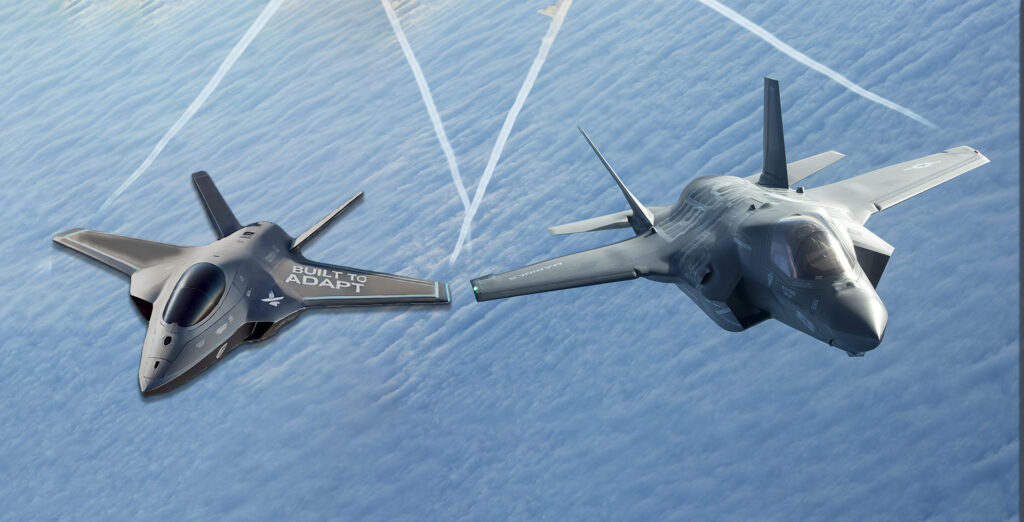
Some senior Air Force officials are now pointing toward a dramatic shift in America’s next stealth fighter program, with high-cost and high-capability platforms like the Next Generation Air Dominance (NGAD) fighter in development potentially shelved in favor of smaller, lighter, and cheaper aircraft built to adapt to new challenges over time.
This “light fighter” concept was brought to the forefront of discussions about the future of American airpower by Air Force Chief of Staff General David Allvin at the Global Air and Space Chiefs’ Conference by the UK’s Air and Space Power Association in London late in July 2024, and was first brought to our attention by journalist Parth Satam at The Aviationist.
During his presentation, General Allvin proposed a significant shift in America’s developmental approach to fielding new fighters, doing away with the longstanding “built to last” design approach that’s predicated on fielding advanced and supremely expensive new fighters meant to operate for a half-century or more. Instead, Allvin suggested, new fighter designs should be “built to adapt,” shifting focus away from long-term survivability and instead toward highly modular designs that can be quickly and easily modified to meet the ever-shifting challenges of the 21st-century battlefield.
Although Allvin did not mention the NGAD program in his remarks, these statements echo those made by others about the new air superiority fighter effort being placed in a strategic pause as the Air Force considers significant revisions to its design and operating model.
The “light fighter” versus “heavy fighter” nomenclature that’s been attributed to Allvin’s concept (he notably didn’t use the terminology himself) is reminiscent of the Lightweight Fighter Program that produced the F-16 as a low-cost wingman for the supremely expensive at the time F-15 Eagle. The F-16’s design focus, of course, was not on modularity or technological adaptability, but was nonetheless groundbreaking thanks to its emphasis on the energy–maneuverability theory of aerobatic performance and its first-of-its-kind adoption of fly-by-wire controls.
But while the F-16 delivered important technological breakthroughs, its real claim to fame was the ability to fight well above its weight class for a serious bargain — ringing it at just more than half the price of the heavy F-15 per jet. This allowed the U.S. Air Force to embrace what’s commonly known as a “high/low mix” of fighters — an approach that’s transitioned over the years to see both the F-15 and F-16 as “low” end fighters, with the F-22 and F-35 assuming the “high” end role.
Allvin argued that America’s existing approach to fighter design, which sees lengthy developmental timelines followed by high-cost procurements and even higher-cost sustainment, is predicated on the “underlying assumption” that the fighters will stay technologically relevant for long enough to substantiate the mountains of funding dollars the programs burn through. But with a long list of foreign nations now fielding stealth fighters of their own and emerging technologies like artificial intelligence promising to make air defense systems more capable than ever, Allvin believes that “underlying assumption” no longer holds true.
“That proposition can become an albatross. It’s still functioning but it’s not as effective,” Allvin said of these high-end fighters as their lifespans wear on.
The Light Fighter Concept and the Digital Century Series

Instead of repeating the lengthy development timelines of today’s top-tier American fighters like the F-22 and F-35, each of which stretched more than two decades between early developmental onset and reaching operational service, Allvin called for leaning further into open system software architecture and supremely modular designs that could be rapidly upgraded or even discarded in favor of newer designs that would share common systems with the previous model.
This is not a new concept for the U.S. Air Force, and in fact, has been the subject of multiple discussions in recent years both related and unrelated to the Next Generation Air Dominance fighter program that has been underway, in one form or another, for a solid decade already. While many have dubbed Allvin’s proposal a new “notional light fighter concept,” a very similar concept was proposed by Air Force acquisition chief Will Roper in 2019 as what he called the “digital century series.”
That title, of course, draws inspiration from the rapidly changing fighter designs of the 1950s collectively known as the “Century Series” – a half dozen fighters ranging from the North American F-100 Super Sabre that entered service in 1954 to the Convair F-106 Delta Dart that followed suit in 1959.
In a similar era of rapid advancements in aviation technology, the original Century series placed a significant emphasis on what a 1960 Rand Corporation analysis described as an attempt “to develop aircraft that embody state-in-the-art [sic] advances and the flexibility with which aircraft subsystems, once developed, could be employed in systems for which they were not originally designed.”

In other words, the original Century Series of fighters aimed to make rapid technological progress through the use of somewhat modular avionics systems and other onboard equipment that could be reused in subsequent aircraft designs, rather than needing to devise entirely new hardware for each. Roper’s more modern “Digital Century Series” would take that concept to the next level, using digital engineering and virtual testing environments to rapidly mature fighter designs and subsystems toward service in modern modular fighters.
General Allvin also provided vocal support for Roper’s pitch at the time, saying, “‘Built to last’ is a tremendous 20th-century bumper sticker, and the assumption then was, whatever you had was relevant as long as it lasts. I’m not sure that’s true anymore.”
In 2021, a similar concept was also discussed by then-Air Force Chief of Staff (and current Chairman of the Joint Chiefs of Staff) General Charles “CQ” Brown, who suggested the branch shift toward fielding what many called a “5th generation minus” fighter design that would leverage modular systems based on those developed for the F-22 and F-35 in lower-cost aircraft with shorter service lives.
This would allow for rapid advancements in aircraft design and performance, as each new fighter iteration would be similar to the last with a series of improvements cultivated through experience with the previous design. Pilots and maintainers transitioning from one aircraft to the next would face minimal training challenges, as the majority of the systems and aircraft functionality would remain the same.
Rather than fielding a new clean-sheet fighter design every ten years, the majority of the previous fighter airframe and systems would be retained from one iteration to the next, swapping out only the design elements or internal components that need to be upgraded or changed to suit the shifting needs of the modern battlefield. One iteration might come with a different wing or tail design, meant to improve stealth, range, or loiter time, while the cockpit, avionics, and other onboard equipment could remain unchanged. Modular avionics systems could simply be swapped out of existing jets, or replaced in the next iteration, resulting in a rotating fleet of fighters that are overwhelmingly similar to one another for the sake of training and maintenance, but that continuously field new technologies or design methodologies meant to offset advancements in adversary defenses.
Breathing new life into the fighter industry

Shortening the intended service lives of fighters could potentially have even more benefits than ensuring the latest and greatest fighter tech is making it into the sky; it could also help to reinvigorate America’s increasingly anemic fighter industry and dramatically reduce the most expensive part of any modern fighter program — it’s long-term sustainment.
Today, there are only three large American firms still in the fighter business — Lockheed Martin, Northrop Grumman, and Boeing — with little promise of any other company ever getting a foot in the door because new fighter programs are so few and far between. With Lockheed Martin securing contracts for both the F-22 and F-35, it’s been over four decades since the U.S. fielded a completely new clean-sheet fighter design that didn’t come from Lockheed’s Skunk Works. With Lockheed Martin seen by many as the potential favorite for the Next Generation Air Dominance competition, it’s entirely feasible that Lockheed Martin could maintain that new-fighter-design monopoly beyond the half-century mark or further.
With so few fighter contracts to go around, there’s no opportunity, let alone incentive, for any other company to try throwing their hats into the fighter ring.
But, a shift toward fielding fighters only meant to serve for a decade or so would mean that initial development on the next fighter could begin as soon as the current one enters service. And by using open system software architecture meant to ensure components and systems developed by any company can integrate and work seamlessly with systems built by any other, each new fighter design would only need to swap out upgraded systems, while retaining the old to keep costs down. This could even allow for smaller companies to submit their own modular designs using the same open framework.
And while shortening a fighter’s operational lifespan from 60+ years to around ten to twenty might sound even pricier than funding exquisite jets like the F-35, there’s a reasonable argument to be made that it would actually cost much less in the long run.
Could building new fighters more often actually cost less?

Today, the vast majority of a fighter’s overall program cost is associated with long-tail sustainment — meaning the cost of operating, maintaining, repairing, and upgrading aircraft over their intended lifespans.
The F-35 program, for instance, is often referred to as a $2 trillion effort as though that immense figure represents the high research, development, and procurement costs of these jets, when in reality, $1.6 trillion of that figure – a whopping 80 percent of the total cost – comes from the projected maintenance and sustainment required to keep the stealth fighter viable throughout its intended lifespan, which stretches all the way into the 2080s.
To dramatically oversimplify the math, that shakes out to about $2 trillion for a fleet of roughly 2,500 fighters operated over the span of 65 or so years — or roughly $800 million invested into each airframe for six and a half decades of service, with around $640 million dedicated to sustainment and only around $160 million in research, development, and procurement costs per jet.
While sustainment costs tend to increase over time (just like it costs more to keep an old car on the road), if we simplify the math by averaging the F-35’s projected expenses over that lifespan, sustainment costs alone could fund the research, development, and procurement of a new comparable fighter design every 16.25 years. Then, when you consider the use of modular systems already in production for each subsequent design and eliminating the need for building airframe-specific repair depots and the like, it starts to look pretty feasible that fielding new fighters every 10-15 years could even be the lower cost option.
Of course, that possibility does come with a fairly sizeable list of assumptions, including the idea that repair depots for integral components wouldn’t require significant overhauls between fighter iterations and that emerging technologies would continue to more-or-less mirror the repeated cost overruns of the F-35 program, so the actual cost of transitioning to this more frequent acquisition model could feasibly end up significantly higher or lower than our estimates — and there’s the rub.
Embracing adaptability means embracing uncertainty
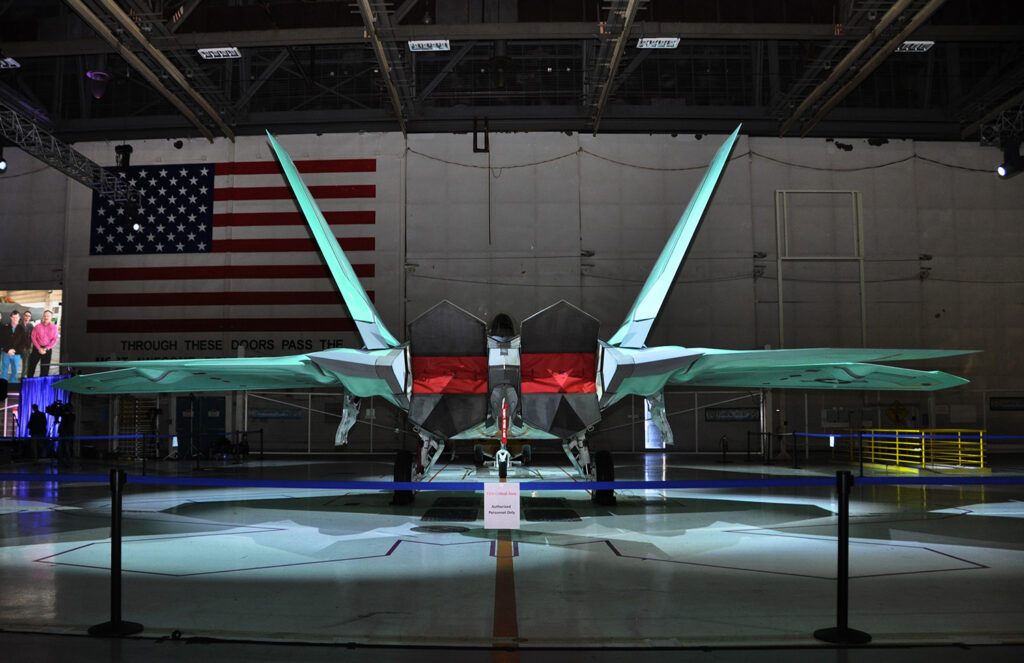
The biggest problem with shifting to the Light Fighter or Digital Century Series acquisition model for the U.S. Air Force is that it’s simply never been attempted in the modern era, and as such, there are few places to look for reliable data when attempting to assess the most effective path forward. Either decision will quickly become the fulcrum point of a new cost lever that stretches all the way to the end of the 21st century, and as such, a seemingly small miscalculation on today’s end could very quickly become an insurmountable budgetary shortfall a few decades down the road.
Air Force acquisitions are an industrial and economic behemoth, and as is the case with any massive enterprise, making such a dramatic pivot would require overcoming a great deal of cultural inertia both within the branch and, even more likely, within America’s industrial base. For companies like Lockheed Martin, winning a fighter contract that includes long-term sustainment is effectively a guarantee of massive revenue numbers for a half-century or more, and that’s something these influential corporate giants would likely fight to keep on Capitol Hill.
That isn’t to say these aren’t challenges that can be overcome — airpower has always been an evolving enterprise, after all — but with so many question marks looming overhead and the near certainty that such a shift would face some serious political challenges, one could make a reasonable argument that it’s simply too late to try to force this change onto the fighters already in development today. Getting these new jets into service under an all-new acquisition model within strategically necessary timelines would require immediately implementing these sweeping changes across the branch, the industry base, the designs themselves, and Air Force training doctrine all at once — all while the Air Force splits its budget and focus among other high-profile endeavors already underway like the B-21 Raider and LGM-35A Sentinel ICBM.
And to be clear, that’s not just the assessment of a cynical researcher looking for holes to poke in an exciting new concept — it’s actually the position argued by Air Force Secretary Frank Kendall just last year.
When asked directly about how the transition to digital engineering and virtual testing environments could allow for Will Roper’s proposed Digital Century Series approach to fighter acquisitions, Kendall — who is seen as the mastermind behind the Air Force’s ongoing efforts to field AI-enabled drone wingmen being designed using a similar approach — tried to reign in the growing enthusiasm for the idea, even going so far as to call it “over-hyped.”
“I have a lot of respect for Will Roper. I’ve worked with him a lot,” Kendall said. “I think he has some really interesting ideas … [but] I think you have to be careful about where you apply those ideas.”
According to Kendall, digital engineering and increasing modularity throughout fighter designs could have a massive impact on both developmental costs and timelines, but realistically, might reduce each by around (a still notable) 20%, rather than ushering in a revolution in aircraft acquisitions. Kendall also clarified that he isn’t entirely confident in even that 20% figure because, again, there’s simply no good data to look to for modeling. Although, as General Allvin recently pointed out, Northrop Grumman’s B-21 Raider stealth bomber and Lockheed Martin’s new Mako hypersonic missile — both designed and tested in digital environments — could each become models for programs of the future to emulate (and for future predictive modeling).
But Kendall also pointed out how similar claims about digital engineering were made during the F-35’s development cycle, which clearly didn’t manifest as predicted.
“Digital engineering isn’t magic,” Even Roper agreed. “Just because you use it doesn’t mean that all the problems of acquisition get out of your way.”
The Air Force needs new missiles, new bombers, and new fighters… But is struggling to pay for them all
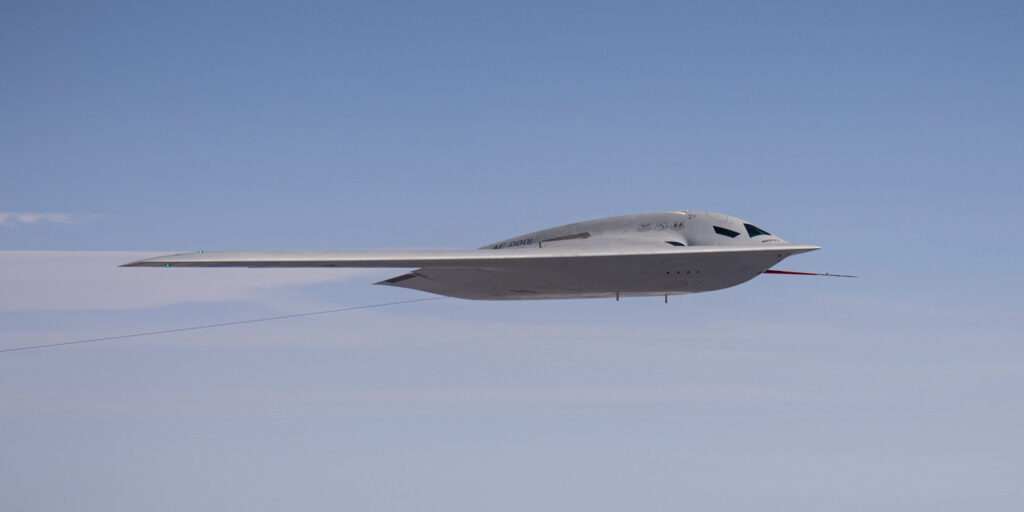
Last year, it seemed as though Kendall had nixed the idea of pursuing this concept for at least the time being, but since then, the Air Force’s economic outlook for the years ahead has certainly changed — so much so, that the Next Generation Air Dominance fighter program that was expected to deliver a production contract this year is now being re-evaluated.
As too-important-to-fail programs like the LGM-35A Sentinel ICBM swell to 81 percent over budget, the Air Force has to adjust to accommodate the loss of tens of billions of dollars in near-future planning, and with contracts already awarded for these new missiles and new stealth bombers in the B-21 Raider, the only big-ticket item left on the chopping block is America’s next air superiority fighter.
Multiple different options are now being considered to ensure America can maintain air dominance in the decades ahead, but for significantly less than initially anticipated. This includes stretching the service lives of F-22 Raptors, which are already amid a multi-billion dollar update meant to ensure they overmatch the most advanced adversary jets entering service.
The F-22 design may date back to the late 1980s, but the aircraft still has the stealth and aerobatic chops to maintain a competitive advantage for years to come, but with Raptor production cut short after just 186 airframes were delivered — only 150 of which were actually combat coded — the Air Force is facing the risk of airframes aging out of service before a viable replacement can be fielded.
With an increased emphasis on collaborative combat aircraft, or AI-enabled drone wingmen, some have questioned whether a new top-tier fighter is necessary at all, as the Block 4 F-35 will have the onboard computing power necessary to manage constellations of these drones on their own, supplemented by advanced sensors on other stealth platforms like the RQ-180 and B-21.
And then, of course, there’s the light fighter concept that places a new emphasis on adaptability over longevity — which would see the United States field fighters meant not to fly for 6,000, 8,000 or even 20,000 hours like the F-15EX, but instead for less than 4,000 — with design for replacements already underway when each new fighter enters operational service.
This model has tons of potential to help ensure America fields only the latest and most capable tactical aircraft in the world. It’s an approach to aircraft design that could change everything about air warfare… But it also comes with arguably even larger risks than today’s long-standing acquisition model. And while today’s NGAD woes can be traced, at least in some part, to overages associated with America’s new ICBM, we need look no further than its current ICBM fleet to see the dangers associated with assuming defense budgets will allow for replacement systems to actually come online every 10 or so years.
Building the ‘Minuteman III’ of fighters

The LGM-30G Minuteman III ICBMs America operates as its land-based nuclear deterrent today started entering service all the way back in 1970 with a projected ten-year service life, meaning they were slated to be replaced by newer and more modern weapons starting in 1980. Its intended replacement, eventually known as the LGM-118A Peacekeeper, didn’t make its first test flight until 1983, with the first ten weapons reaching service in 1986.
However, the shifting geopolitical landscape following the fall of the Soviet Union in 1991 and the subsequent Strategic Arms Reduction Treaty (START) II signed in 1993, saw only 50 Peacekeepers ever built — all of which were subsequently retired by 2005. As a result, the United States has spent billions trying to keep its aging Minuteman IIIs viable decades after their intended lifespans, and now has acknowledged that they’ve reached the point where it’s no longer feasible to keep them in service.
As a result, the Air Force now has no choice but to swallow the ballooning cost of this program as it’s nearly doubled in budget over the past few years, simply because the missiles that were initially meant to serve for roughly ten years will now be on duty beyond their 60th birthday.
And while missiles and fighters are certainly not the same types of programs, the lack of data we have to pull from to inform a decision about short-lifespan fighters leaves us with few places to look outside the confines of Air Force acquisitions in recent decades — which are, of course, informed by the contemporary politics surrounding these decisions.
The fact of the matter is, awarding a production contract for any fighter (or really, any military platform, for that matter) is — to some extent — a gamble. The Pentagon may know how well the prototypes and technology demonstrators perform, but it’s betting on the winning firm to be able to mass produce the same capabilities for a projected cost. It’s betting that there won’t be any significant unforeseen technical challenges once the platforms reach the field, betting on continued Defense priorities throughout the production run, and maybe the biggest gamble of all… it’s betting on continued political support for years or even decades as a design on a sheet of paper matures into an operational fleet of platforms.
And while the idea of rapidly adaptable fighter designs meant to be thrown away every ten years does sound incredibly promising, actually executing such a dramatic shift in acquisition will require an immense amount of political and industrial buy-in — something that won’t come easily without a clear upside for both parties. But even if that can be accomplished quickly enough to field a new air superiority fighter in the early 2030s, when even upgraded F-22s will be starting to get pretty long in the tooth, that wouldn’t be the end of the challenge.
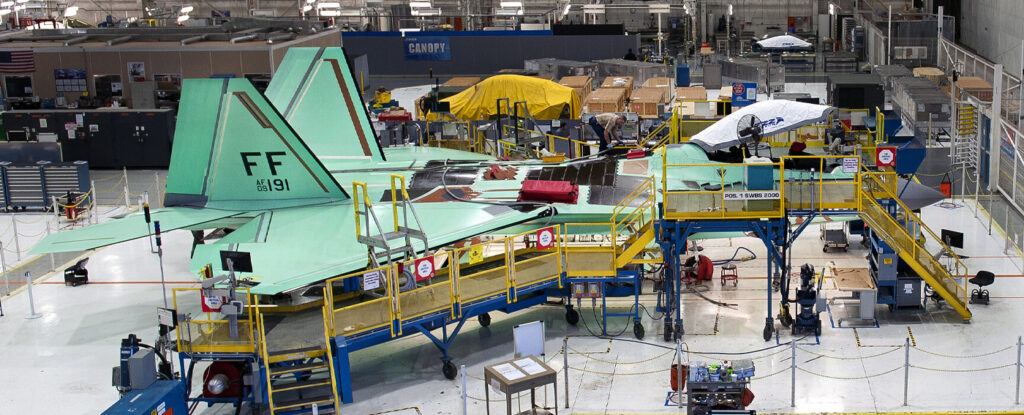
The Air Force would almost invariably find itself having to argue to justify the purchase of a new slew of fighters in the 2040s, as lawmakers question whether the jets designed to last for only one decade really need to be replaced after all, with many arguing that swapping out modular systems should be sufficient to maintain its competitive edge. Then, the debate would begin anew in the 2050s, the 2060s, and so on, with the concept’s efficacy teetering in the balance every time.
Unlike the Minuteman III, which was originally slated for just a ten-year service life, the LGM-35A Sentinel is expected to stay in service for better than a half-century, because the Air Force has no intention of making the same mistake twice with these long-range munitions. It’s well aware of the fact that fielding ICBMs that would need replacements ten years down the road assumes funding for those replacements will be forthcoming, and in today’s political climate, that’s an awfully big assumption.
And yet, because of the Sentinel’s immense cost overruns, the NGAD program now runs the risk of becoming the fighter equivalent of the Minuteman III itself — a system meant to serve for 10 years, but dragged down the road for decades as officials and lawmakers try to dodge the sticker-shock of fielding a replacement until they have no other options left.
And then, when that program goes 81 percent over budget before the first aircraft is even delivered the way Sentinel has, Defense officials would be forced to echo the same talking points about how the strategic need for replacement outweighs the economic impact of cost overruns.
Cultural inertia in the fighter business

So, does this idea of fielding lower-cost fighters more frequently make sense? In a lot of ways, it definitely does, and to be clear, this is very much the design methodology being employed for a variety of unmanned platforms like the collaborative combat aircraft (CCAs) currently making their way toward service.
But big-ticket acquisitions like fighters, bombers, and warships are subject to far more than military considerations — they’re the subject of immense public scrutiny and lawmaker debate that can span decades, and when it comes to the court of public opinion, there are no guarantees that extend beyond the end of the week, let alone the end of the decade.
It’s not impossible that such a concept could work, and if Uncle Sam could pull it off, it might make for the most incredible series of tactical aircraft this world has ever seen… But in today’s political world, it seems like a miracle when lawmakers can come together and agree to fund a tent-pole program like air superiority fighters… And it seems dangerous to bet on that miracle happening on schedule, over and over again, as each tranche of new fighters begins development.
The most optimal solution might truly be found in the lineage of the “light fighter” terminology itself, which was famously attributed to the F-16 program as a means to provide America’ with sufficient fighter capacity when it became clear the Air Force couldn’t afford to procure F-15s in sufficient numbers to meet the force’s strategic needs. At the time, the Lightweight Fighter Program’s success with the F-16 didn’t see the cancellation of the F-15 it was meant to supplement — and a new “lightweight fighter” meant to supplement the NGAD program could provide similar benefits.
This possibility was even hinted at by Retired Gen. James M. Holmes, former head of the Air Force’s Air Combat Command in 2021, when he said the branch may ultimately field two variants of the fighter to emerge from the NGAD program — one with more range and payload capacity for extended engagements over the Pacific (which would be the pricier of the two), and a separate, smaller (i.e. lighter) design meant for shorter-ranged operations in places like Europe. The use of modular systems and open system software architecture would allow for a great deal of commonality between airframes, reducing the costs associated with standing up two separate fighter production lines… Nonetheless, for a cash-strapped Air Force, this would be a significant challenge.
And of course, with the F-35 still in active production, the arithmetic gets even more complicated.
Some might reasonably argue that the F-35 itself, which now rings in at an average of $82.5 million per runway variant — roughly $7.5 million less than a new F-15EX — is already positioned to fill that “low” end role as compared to the NGAD’s anticipated flyaway costs of some $300 million per airframe. After all, $82.5 million may sound like a lot, but it’s significantly lower than the adjusted prices on some of the previous era’s top-tier platforms like the F-14 Tomcat, which when adjusted to today’s inflation, cost nearly $121 million per unit in 1970s.
But then, in my lifetime we’ve seen things like stealth go from a handful of boutique, specialized and classified airframes that operated in secret and only under cover of darkness, to the F-35 becoming one of the most widely operated fighters on the planet, with more than 1,000 airframes delivered and production expected to continue well into the 2040s to meet demand. There is simply no denying that things are changing — and changing quickly.
So, maybe I’m just being a part of that cultural inertia that such a momentous plan would need to overcome in order to succeed.
Read more from Sandboxx News
Related Posts
Sandboxx News Merch
-

‘AirPower’ Classic Hoodie
$46.00 – $48.00 Select options This product has multiple variants. The options may be chosen on the product page -

‘Sandboxx News’ Trucker Cap
$27.00 Select options This product has multiple variants. The options may be chosen on the product page -

‘Sandboxx News’ Dad Hat
$27.00 Select options This product has multiple variants. The options may be chosen on the product page

Alex Hollings
Alex Hollings is a writer, dad, and Marine veteran.
Related to: Military Affairs

The AGM-181 LRSO missile will modernize America’s nuclear triad

Navy will soon announce the contract award for its F/A-XX 6th-generation jet, according to reports

America’s new air-to-air missile is a drone’s worst nightmare
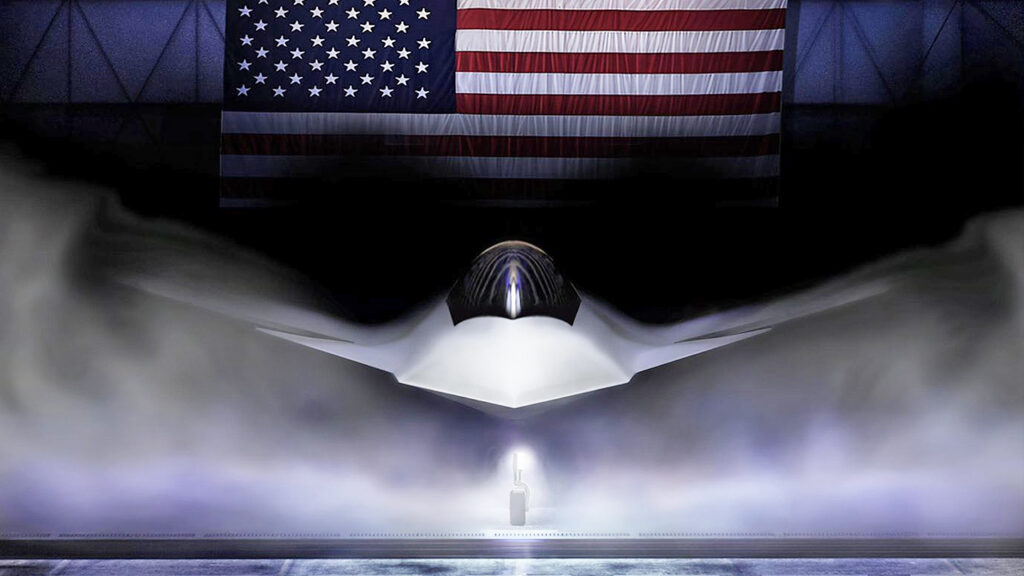
What we can deduce about the Boeing F-47 and its capabilities so far
Sandboxx News
-

‘Sandboxx News’ Trucker Cap
$27.00 Select options This product has multiple variants. The options may be chosen on the product page -

‘AirPower’ Classic Hoodie
$46.00 – $48.00 Select options This product has multiple variants. The options may be chosen on the product page -

‘AirPower’ Golf Rope Hat
$31.00 Select options This product has multiple variants. The options may be chosen on the product page -

‘Sandboxx News’ Dad Hat
$27.00 Select options This product has multiple variants. The options may be chosen on the product page
